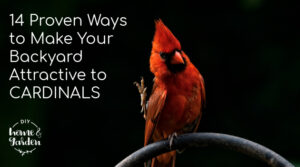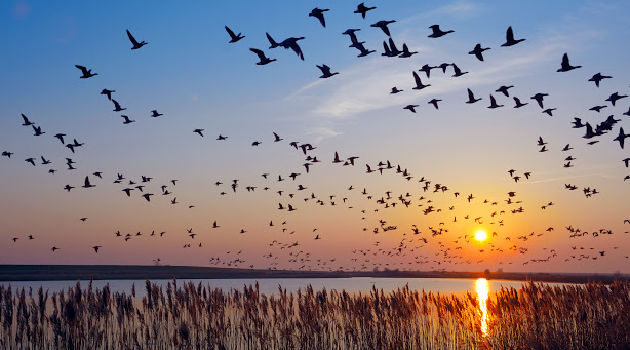The Robin is a beautiful feathered friend who makes an early appearance to herald the arrival of springtime. They are a beacon of hope that the dreary winter months are drawing to a close and long, lazy summer days are in the imminent future.
These birds are subdivided into different classifications due to their color, shape, and food habitat.
The American robin and European robin are prominent among them. The American Robin is a deep, rich brown in color. The orange and dark brown abdomen and tail are often flecked with a touch of white. This bird measures about eleven inches long and holds a status as a popular songbird. Its eggs are a blue mixed green color, and they lay eggs three times annually. Their main meal is worms and various fruits and insects.
American robins live in grasslands, parks, and forest suburbs. It can be seen throughout the year in the United States, and some migrate as far north as Alaska to spend the summer.
The upper body of the European Robin is brownish-olive. They have a white stomach area. The breasts and face are a dark orange color. It is about 5.5 inches long. They lay five or six eggs throughout the breeding season. The eggs are reddish-brown with white spots. The European robin can be easily found in urban and suburban parks in open forest areas. It is found throughout the year in the British Isles.
Today, we will talk about our American feathered friends–the kind we frequently see skipping around our gardens in North America.
8 Ways You Can Invite Robins Into Your Yard
Avid birdwatchers use binoculars for observing from afar. This equipment allows them to study our feathered friends without scaring them. But you can watch robins in your yard by creating a safe haven for your winged friends. These are territorial birds, so you might not attract more than one or two pairs of mates, depending on the size of your property. In fact, the springtime song you hear is a sure sign that robins are “claiming” your yard and telling others in their species that the spot is off-limits!
Is that not fascinating?
1 – Create “Leaf Litter” Piles in Your Yard
When it is time to nest, female robins construct cup-shaped nests from a mixture of mud and natural materials. She looks for twigs to weave the nest’s structure and leaves and grass to insulate the bottom and sides of the nest. This layer helps her to keep her eggs warm until they hatch.
Some birdwatchers estimate that it takes a mama robin and her mate over 200 trips back and forth from the ground, from which she collects bits of materials, back to the nest. It might take her as long as two weeks to finish making the nest. Note that while the male helps collect the materials, he protects the female as she actually does the nest building; he does not actively build the nest.
When she finishes building it, her nest can be as large as 8″ in diameter.
You can help a mama bird pick your yard by putting convenient “litter piles” out during nesting season (springtime). Preferably, you would place these near a sturdy tree that might attract a bird who needs to make her nest.
Some materials to put out for her include:
- Small twigs (under 6 inches long)
- Leaf debris
- Grass clippings
- Dryer lint
2 – Invest in Mealworms to Feed the Robins
Robins enjoy the birdseed blends you put out for them. However, the species more greatly benefits from adding mealworms to the menu. Prepare the food mixture, add mealworms, and place it on a feeding ledge or near their usual feeding spot. You will attract a nice variety of birds to your offerings.
These birds should eat a diet of only 40% seeds and fruits but 60% worms, grubs, and insects. This balance is most important in the springtime when mama birds need the nourishment for producing healthy hatchlings.
3 – Offer Your Feathered Friends These Fruits for a Varied Diet
The quality of this common songbird’s food determines its health status. So put a fruit dish on the feeding tray. Many different fruits attract these birds. It contains a large number of vitamins A, which is an essential nutrient for birds.
Some fruits they seem to enjoy are as follows:
- Blueberries
- Mulberries
- Cherries
- Strawberries
- Apples
- Grapes
- Juniper
- Oranges
- Blackberries
- Raspberries
- Peaches
- Tomatoes
- Bell peppers
In my yard, they particularly seem to love strawberries–much to my chagrin 😉
4 – Install a Protected Nesting Ledge
You can use a tree, a wall, or a fence to attach a nest ledge. A basic, sturdy pedestal, low sides to keep the nest secured safely in place, and a basic roofing structure will protect her from overhead predators, and poor weather will become prime real estate for a bird looking to build a nest. However, you must remember that the robin’s nest can be relatively large, so a square of 12″ provides a spacious platform becomes a necessity if you want to attract this bird, specifically.
5 – Provide a Bird House or Two
Birds will use the housing that you provide them for security, habitat, as well as laying eggs. By offering this safe haven, you too can befriend a robin family upon their arrival in the spring months. Once mama bird lays her eggs, they hatch in about two weeks. After that, it takes fledglings about two before they take flight.
Scientists estimate that only about 25% of these birds survive to reach six months due to predators. For that reason, young birds stay near their “home nest” and within their parents’ territory for another four months or so. So when you provide a home, you expand their chances of surviving to adulthood.
6 – Grow Evergreen Shrubs for Early Spring Cover from Predators
Growing evergreen shrubs enhances the beauty of your yard and provides shelter and protection for feathered friends. Shrubs with tightly packed limbs and strong branches provide an essential hiding place where birds can escape predators like cats and larger birds of prey.
7 – Robins Prefer Ground Feeding or a Platform Feeder
Install a platform feeder instead of using a hanging feeder or perch feeder to attract these early springtime visitors.
Why this preference?
Many believe it’s because this species needs to root into the Earth for worms, beetles, grubs, and other protein sources, so they have this natural inclination. So placing a platform feeder in your feeding area will encourage this species to visit your yard.
8 – Give These Songbirds a Bird Bath to Enjoy
The feathered friends who come to the birdbath to bathe to quench their thirst are naturally attracted to you. But a birdbath does more than providing birds water to drink. Indeed, it provides a place to cool off during hot spells and moisture to make mud for nest building.
Invest in a birdbath with a solar fountain feature to keep the water moving steadily. Otherwise, it may stagnate and attract unwanted mosquitoes or cause algae to build up, which can harm some birds.
The Takeaway: You Will Enjoy Birdwatching and the Antics of Robins.
If you enjoy birdwatching and nature, you’ll enjoy the cheery antics of robins as they dance across your lawn, seeking food. The miracle of witnessing the diligent nest-building process is well worth the reward for doing these kind things to create a safe haven for these birds. In return for your kindness and sharing your yard with your new feathered friends, they will gladly provide grub control for your lawn.




